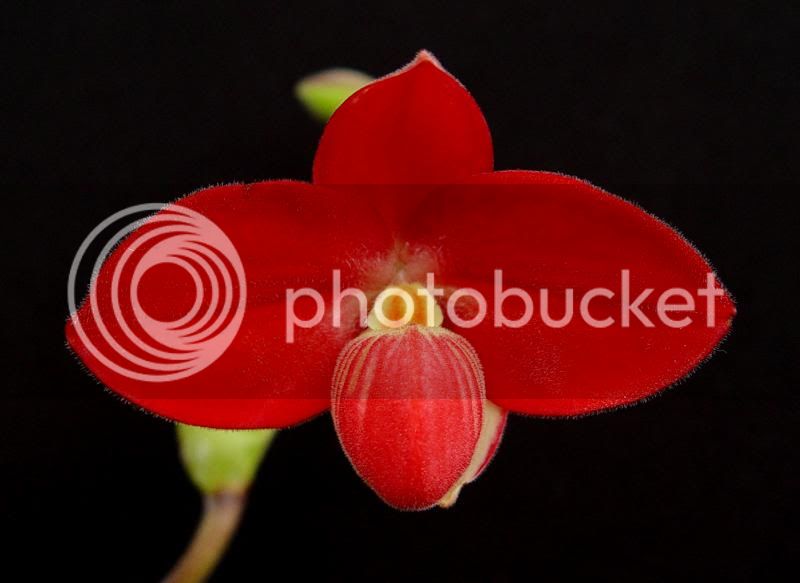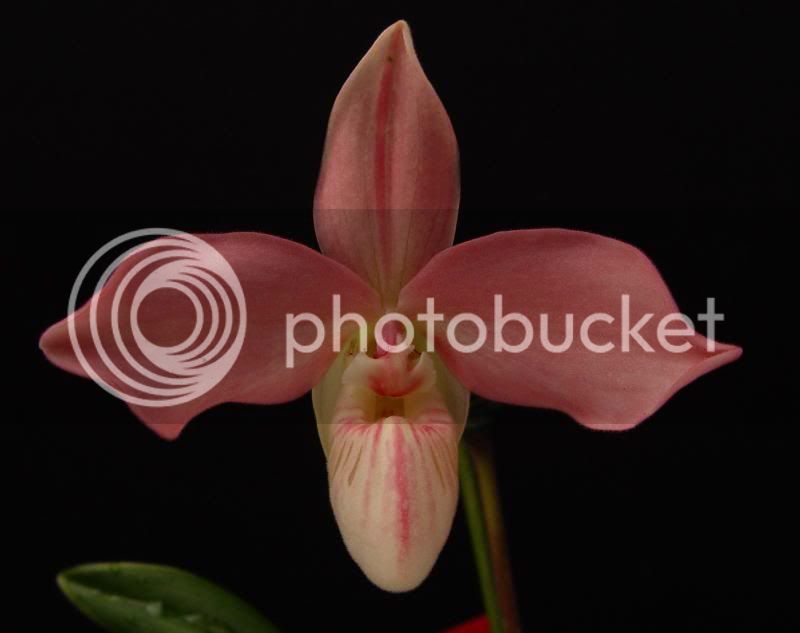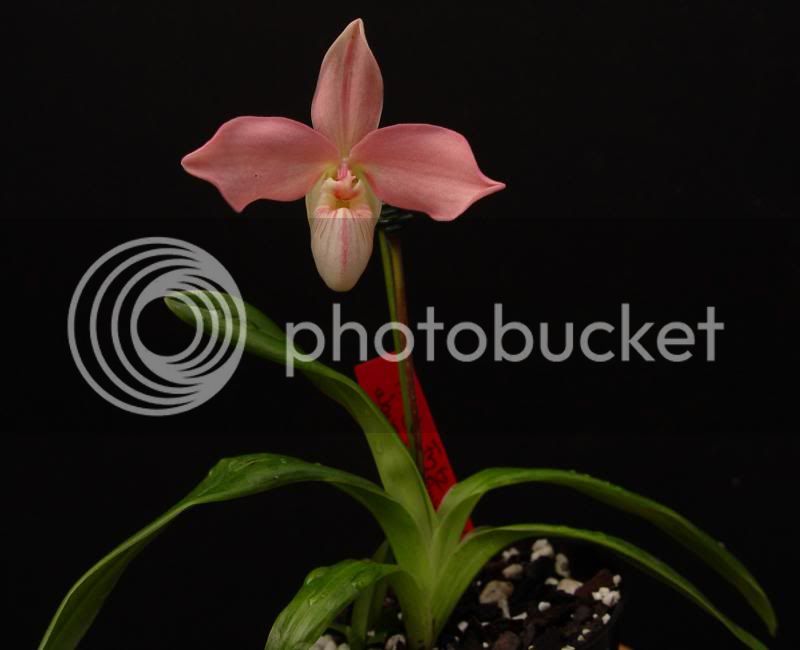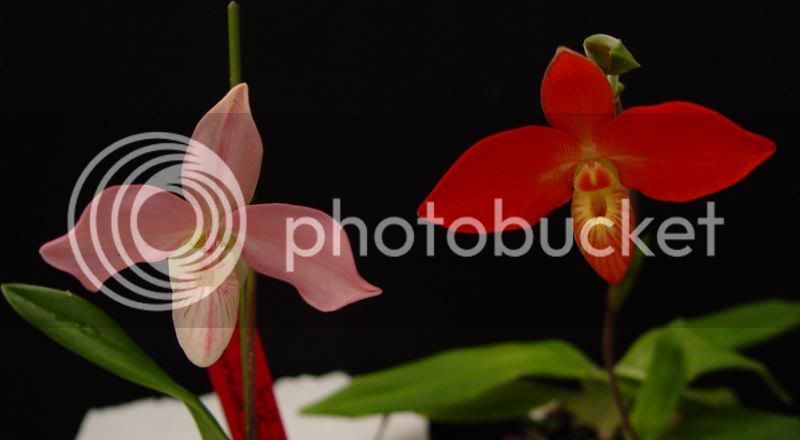D
Drorchid
Guest
One of our next generation Phrag. kovachii hybrids bloomed. We crossed our tetraploid Phrag. Wanuakee Sunset 'Red Mimosa' to a diploid Phrag. Fritz Schomburg 'Pink Flamingo'.
Here is a picture of Phrag. Waunakee Sunset 'Red Mimosa'

Here is the hybrid (Fritz Schomburg x Waunakee Sunset)


next to a regular Phrag. besseae. Notice the size has really decreased, and is almost as big as a besseae! I don't know if this hybrid is really an improvement over either parent, but it has interesting colors, it almost looks like a "mini" Fritz Schomburg. Also keep in mind this was a first bloom seedling on a very small plant (it was already blooming in the compot), so next time the flower will improve in size and in shape.

So here is my genetics question/quizz who can tell me what the percentage of the species besseae, fischeri and kovachii are in the background of this hybrid? Keep in mind that the Wauanakee Sunset is a tetraploid so has twice the number of chromosomes compared to the Fritz Schomburg.
Robert
Here is a picture of Phrag. Waunakee Sunset 'Red Mimosa'

Here is the hybrid (Fritz Schomburg x Waunakee Sunset)


next to a regular Phrag. besseae. Notice the size has really decreased, and is almost as big as a besseae! I don't know if this hybrid is really an improvement over either parent, but it has interesting colors, it almost looks like a "mini" Fritz Schomburg. Also keep in mind this was a first bloom seedling on a very small plant (it was already blooming in the compot), so next time the flower will improve in size and in shape.

So here is my genetics question/quizz who can tell me what the percentage of the species besseae, fischeri and kovachii are in the background of this hybrid? Keep in mind that the Wauanakee Sunset is a tetraploid so has twice the number of chromosomes compared to the Fritz Schomburg.
Robert



